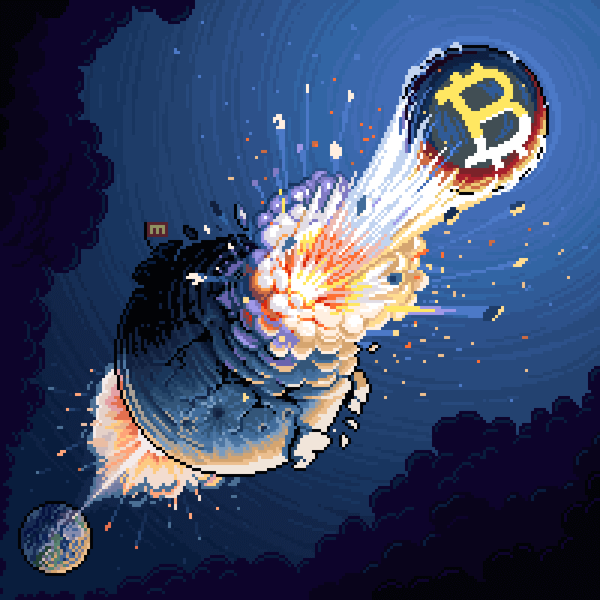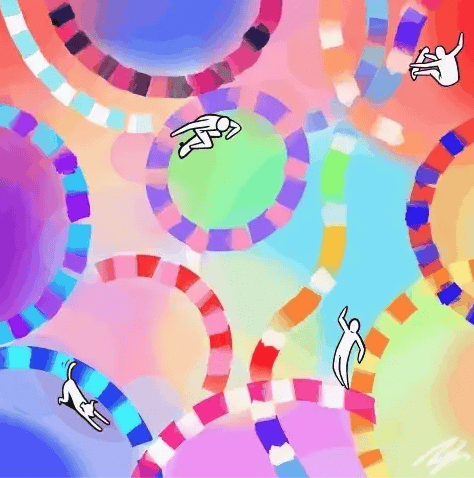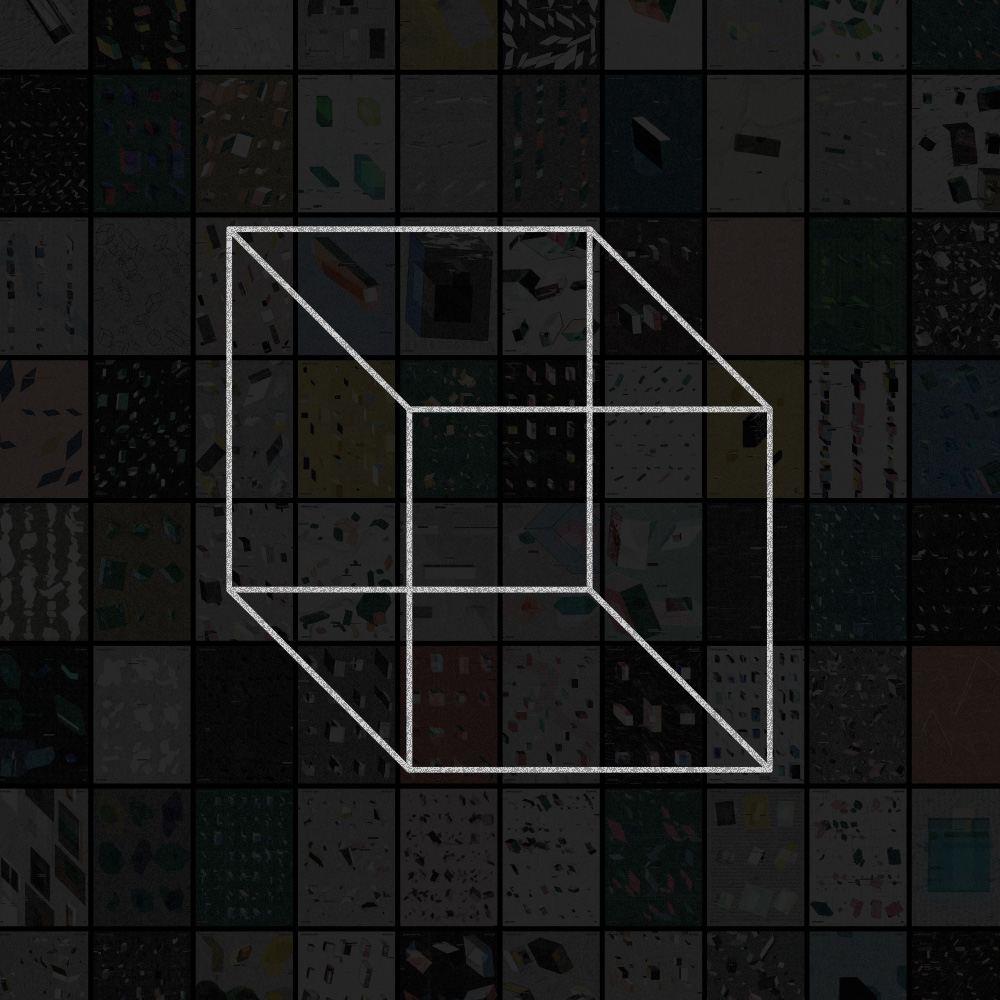Pixel art is a form of digital art where images are created with carefully placed pixels, evoking the visual style of early video games. This art form gained prominence during the 8-bit and 16-bit eras of gaming, with iconic names like Super Mario Bros. and The Legend of Zelda showcasing the charm of simple, blocky graphics. Despite its minimalism, pixel art captures a sense of nostalgia, transporting viewers back to the early days of gaming when vibrant characters and imaginative worlds were built from a limited palette of colors and pixels. Pixel art fits perfectly on Bitcoin, due to its relatively small file size, and ability to scale perfectly. Let's meet five Gamma Partner Artists who's practice uses pixels.
CMYK
CMYK's journey into pixel art began with their love for geometric shapes. For them, pixels offer a versatile medium for creating diverse images. Their workflow prioritizes efficiency, favoring pixel editors with simple animation features.
While retro games have influenced CMYK's work, they're not looking to replicate those aesthetics. Instead, they use pixel art to create abstract or glitch-like animations, focusing more on exploration than nostalgia. Their work tends to lean futuristic rather than nostalgic.
One of CMYK's favorite creations is "The Timepiece of Thades," an abstract piece made with a pixel editor. This expressionistic work represents years of artistic striving and showcases the unique possibilities of pixel art.
For aspiring pixel artists, CMYK advises: "Learn to draw first." They believe that a strong foundation in drawing makes it easier to reduce forms to their basic, recognizable shapes in pixel art.
Smarahakim
Smarahakim finds pixel art captivating for its ability to push the boundaries of imagination and abstraction. Working primarily with Pixaki, they often employ dithering techniques to emulate gradients and add texture to their pieces.
Influenced by retro video games, Smarahakim often imagines darker twists on early Capcom games like Mega Man. However, they bring a fresh approach by incorporating modern messages and aesthetics into their pixelated style.
Their piece "Screenvader Breaker" is a prime example of their semi-pixel art style, commenting on societal issues with a flashy, critical, yet playful approach. Smarahakim often deliberately exports artworks in micro sizes to evoke a broken, blurry vibe.
To aspiring pixel artists, Smarahakim says: "Try different things, don't settle. Enjoy it, and let art become your therapy."
Pixlosopher
For Pixlosopher, pixel art serves as a vessel for digital nostalgia. They see pixels as the foundation of digital art's reality, inviting viewers to fill in the blanks and fostering an intimate connection between artist, medium, and viewer.
While classics like Mario Bros. have influenced their work, deeper inspiration comes from games like Final Fantasy V, Zelda, and Stardew Valley. Pixlosopher views pixel art as more than just a nostalgic nod to gaming—it's a form of artistic expression in its own right.
One of Pixlosopher's most cherished creations is "Pixel Nostalgia," a collection minted on Foundation that narrates memories from their childhood. They've also ventured into AI Pixel Art, using custom LORAs and Retrodifussion to create work with a more organic appeal.
Pixlosopher's advice for aspiring artists is simple yet profound: practice as much as possible and stay open to new techniques and ideas.
ZaH
ZaH was drawn to pixel art by its ability to create visually surprising and captivating experiences. They enjoy the medium's duality of mixing old with new, finding it both fun and powerful.
Rather than drawing inspiration solely from early video games, ZaH finds passion in mixing Web3 culture, cinema, and art history with pixel aesthetics. They often work with ASCII art, transforming great works of art history into something pixelated and fresh.
ZaH is particularly fond of their ordinal #67482269, which marked their first private sale. They also treasure works like the first version of "United Ordinals" and their pixelated portrait of Lauren Bacall.
When asked for advice, ZaH humbly admits that they still consider themselves an aspirant, hoping others will have as much fun with pixel art as they do.
WeaslyGrizzly
WeaslyGrizzly was drawn to pixel art by the precise logic required to arrange individual pixels into cohesive compositions. They appreciate the structured process where each pixel is intentionally placed.
Using the Pixaki app on their iPad, WeaslyGrizzly often works with outlines and fills, drawing inspiration from isometric games like UFO, Jagged Alliance, and Fallout, as well as old-school comics.
For WeaslyGrizzly, tackling perspective and depth in pixel art, particularly with isometric scenes, is all about color tones. They note humorously that in isometric art, depth comes entirely from the variation in color, giving the illusion of space and form.
WeaslyGrizzly approaches each piece with the same logical and deliberate methodology that defines their pixel art, carefully balancing the scale of the piece with the time investment.
These five artists highlight the diversity of pixel art on Bitcoin Ordinals, each bringing a unique approach to this evolving medium. While rooted in nostalgia, pixel art has grown into a vibrant part of the digital art collecting. Pixels never die!







.png)

